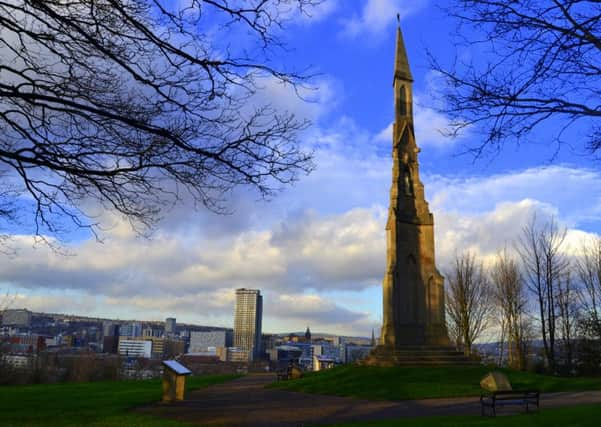Strategy bid to make the most of Sheffield's heritage


A group of 20 organisations who want to promote the city’s history believe an over-arching strategy could boost visitor numbers to Sheffield and potentially bring in funding for projects worth millions of pounds.
The document would deal with heritage of all kinds – from the city’s buildings and museums to its industrial history, views and open spaces.
Advertisement
Hide AdAdvertisement
Hide AdDiscussions will take place this weekend during Sheffield’s first heritage conference, a key event of the Year of Making, a 12-month celebration of the city’s strengths.
One of the aims of the festival is to identify new paths to success.
Brian Holmshaw, chair of the conference steering committee, said: “The idea is about increasing local, regional and national awareness of the Sheffield area’s heritage, its stories, its sites and its assets, to bring people to the city and to make a positive contribution to the visitor economy.
“We would love to develop a heritage strategy.
“We see that as being important because it starts to identify what the priorities are for Sheffield.”
Advertisement
Hide AdAdvertisement
Hide AdThe 20-strong group behind the conference, called Joined Up Heritage, formed just over a year ago.
Members include various Friends groups, including those concerned with Wincobank Hill and the Sheaf Valley Park behind the railway station.
“The whole thing about the Antiques Quarter as well has become very important,” said Brian.
He added: “There are over 1,000 listed buildings in Sheffield and 38 conservation areas in the city. Sometimes even Sheffield people don’t realise all that exists.
Advertisement
Hide AdAdvertisement
Hide Ad“No wonder visitors to the city don’t make the most of it, because often you don’t know what’s on your own doorstep.
“Open spaces are heritage that Sheffield has been given by the Victorian philanthropists and the work the city council has done over many years investing in parks.”
Flagging up Sheffield’s medieval and ancient past is one of the motives behind launching a strategy, and protecting the views from the city’s hills will be important when considering where to put future developments, he said.
“The viewpoint from the Cholera Monument park needs to be respected. In virtually no other city, maybe Edinburgh excepted, do you get such views. We have to be careful about the choices that are made in what we place there, and proper consultation is really important.”
Advertisement
Hide AdAdvertisement
Hide AdAn equivalent strategy in Nottingham has brought in millions from the Heritage Lottery Fund and Historic England, Brian said.
“Once the strategy was in place it released that money. They said ‘We can see you made this, were prepared to support it, therefore let’s invest in you.’ There’s heritage in the city – it might not be as grandiose as in Manchester and Leeds, but it’s there.”
Feedback from the council has been positive and enthusiasm is building, he said. “It’s no good doing it from on high. We’re getting interest from the north and east of the city as well, not just the traditional south and west where people would think of there being that kind of support group.”
Booking for the conference – called Making History for a Successful City and supported by the two Sheffield universities – is now closed. Another event about the strategy is happening in October.
Email [email protected] with ideas and suggestions.